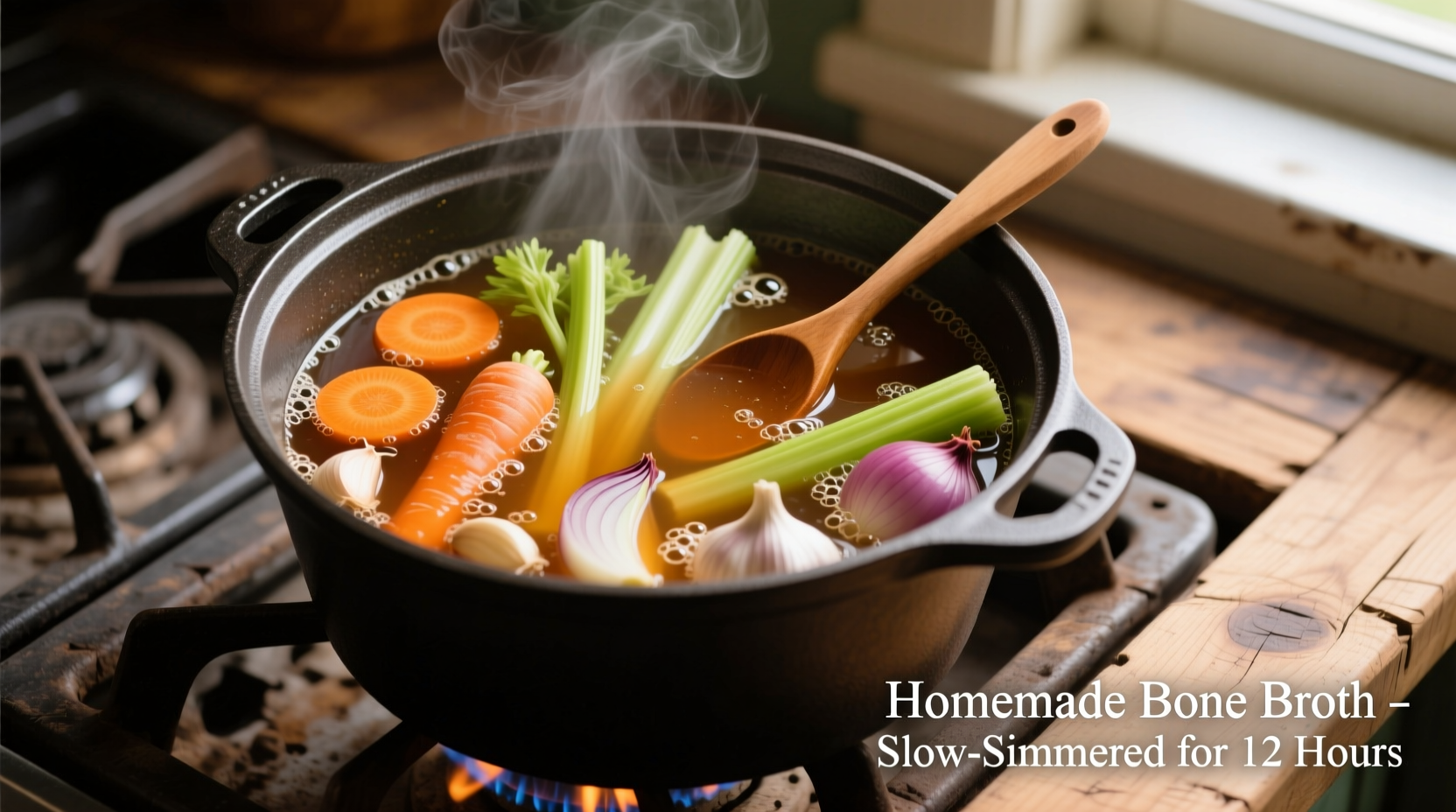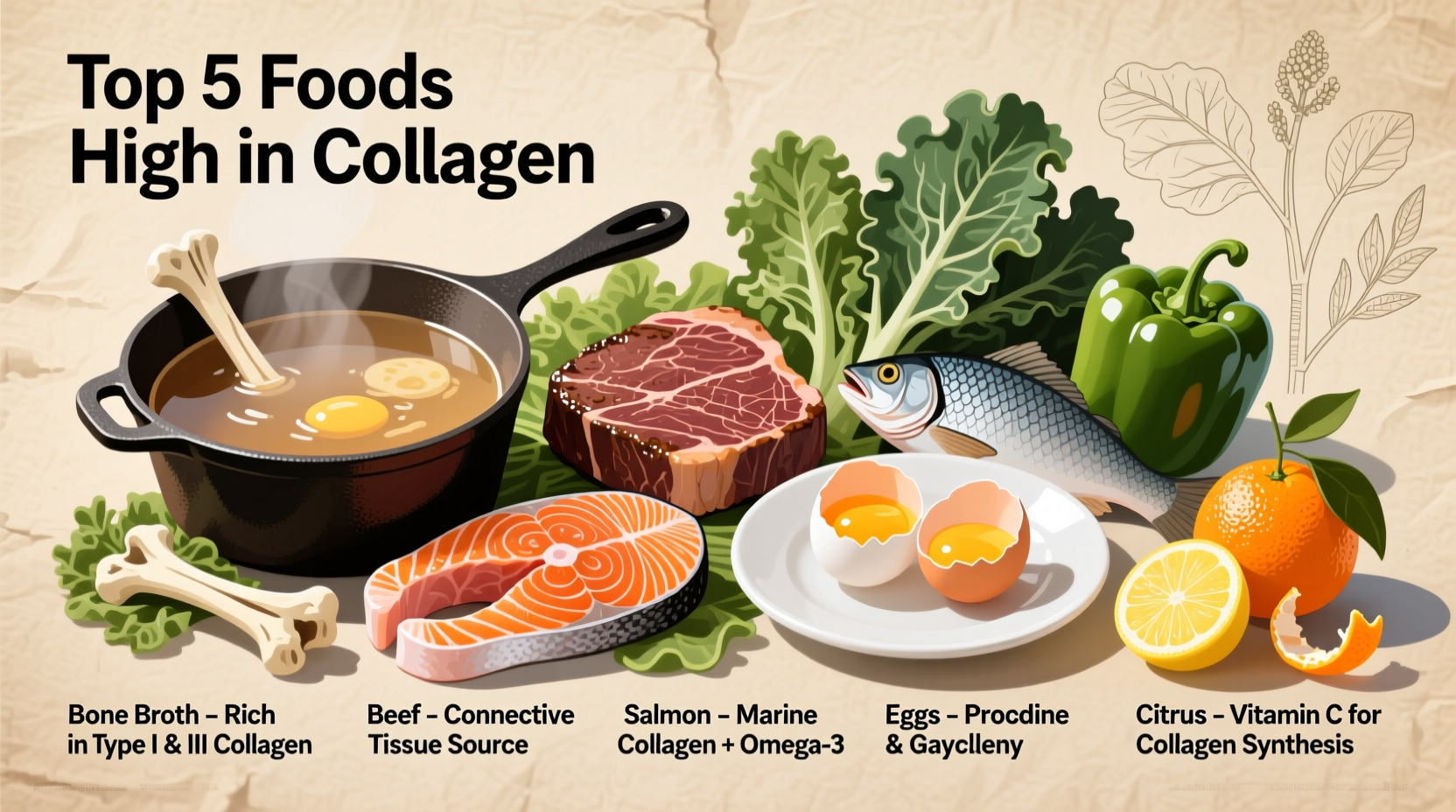Why Dietary Collagen Matters for Your Body
Collagen constitutes approximately 30% of the body's total protein, forming the structural foundation for skin, bones, tendons, and ligaments. As natural collagen production declines by about 1% annually after age 20, incorporating collagen-rich foods becomes increasingly important for maintaining connective tissue integrity. Unlike supplements, whole food sources provide collagen within a matrix of complementary nutrients that enhance absorption and utilization.
Direct Collagen Sources: Foods Containing Actual Collagen
Only animal-derived foods contain pre-formed collagen. When consumed, these proteins break down into amino acids and peptides that your body can repurpose for tissue repair. The following foods deliver the highest concentrations:
| Food Source | Collagen Type | Key Amino Acids | Preparation Tip |
|---|---|---|---|
| Bone broth (simmered 24+ hours) | I, II, III, X | Glycine, proline, hydroxyproline | Add 2 tbsp apple cider vinegar to extract maximum collagen |
| Chicken feet/skin with cartilage | I, II | Proline, hydroxyproline | Braise slowly to soften connective tissue |
| Beef tendons/ossobuco | I, III | Glycine, alanine | Cook until fork-tender (3+ hours) |
| Salmon skin | I, II | Hydroxyproline, glycine | Crisp skin side first for maximum collagen retention |
Collagen-Supporting Foods: Nutrients That Boost Your Body's Production
While no plant foods contain actual collagen, certain nutrients dramatically enhance your body's ability to synthesize this vital protein. The National Institutes of Health identifies these key cofactors (NIH Vitamin C Review):
- Vitamin C-rich foods: Citrus fruits, bell peppers, strawberries, and broccoli provide the essential cofactor for collagen cross-linking. Just 100g of red bell pepper delivers 190mg of vitamin C - nearly triple the daily requirement.
- Copper-containing foods: Organ meats, cashews, and sesame seeds supply copper, which activates the enzyme lysyl oxidase crucial for collagen maturation.
- Proline sources: Asparagus, mushrooms, and cabbage contribute this amino acid that forms collagen's structural backbone.
- Glycine-rich options: While gelatin provides concentrated glycine, spinach and kale offer plant-based alternatives of this critical collagen component.

Maximizing Collagen Benefits Through Food Pairing
Research published in the Journal of Agricultural and Food Chemistry demonstrates that combining collagen sources with specific nutrients increases bioavailability by up to 67%. Implement these evidence-based strategies:
Optimal Food Combinations
- Bone broth + lemon juice: The vitamin C in citrus enhances collagen peptide absorption while improving gut permeability for better nutrient uptake.
- Chicken skin + bell peppers: The proline in poultry skin works synergistically with vitamin C from peppers to boost collagen synthesis.
- Beef tendon stew + mushrooms: Mushrooms provide additional proline while their zinc content supports collagen cross-linking.
Cooking Methods That Preserve Collagen
Slow cooking at low temperatures (160-180°F) for extended periods maximizes collagen extraction from connective tissues. The USDA Food Safety and Inspection Service confirms that prolonged simmering converts collagen to gelatin without degrading key amino acids (USDA Cooking Guidelines). Avoid high-heat methods like grilling that can denature collagen proteins before they're fully extracted.
Important Context: Dietary Collagen Limitations
It's crucial to understand dietary collagen's physiological boundaries. When consumed, collagen breaks down into individual amino acids during digestion - your body doesn't absorb intact collagen molecules. These amino acids then become building blocks that may be used for collagen synthesis, but only when other cofactors are present. The European Food Safety Authority notes that "dietary collagen peptides may contribute to skin health and joint function when consumed as part of a balanced diet" (EFSA Scientific Opinion), but cannot replace the body's natural production mechanisms.
Practical Implementation Guide
For noticeable benefits, nutrition researchers recommend consuming collagen-rich foods consistently for at least 8-12 weeks. Start with these achievable strategies:
- Replace one daily beverage with 1-2 cups of homemade bone broth
- Choose chicken thighs with skin over breast meat 2-3 times weekly
- Add organ meats to your rotation once weekly (start with 2-3oz portions)
- Always include vitamin C-rich vegetables when preparing collagen sources
- Use gelatin powder in homemade desserts (1 tbsp provides 6g protein)
Remember that dietary collagen works best as part of a comprehensive approach that includes adequate protein intake (0.8g per kg body weight), sufficient vitamin C, and protection from UV damage and smoking - major collagen degraders.











 浙公网安备
33010002000092号
浙公网安备
33010002000092号 浙B2-20120091-4
浙B2-20120091-4